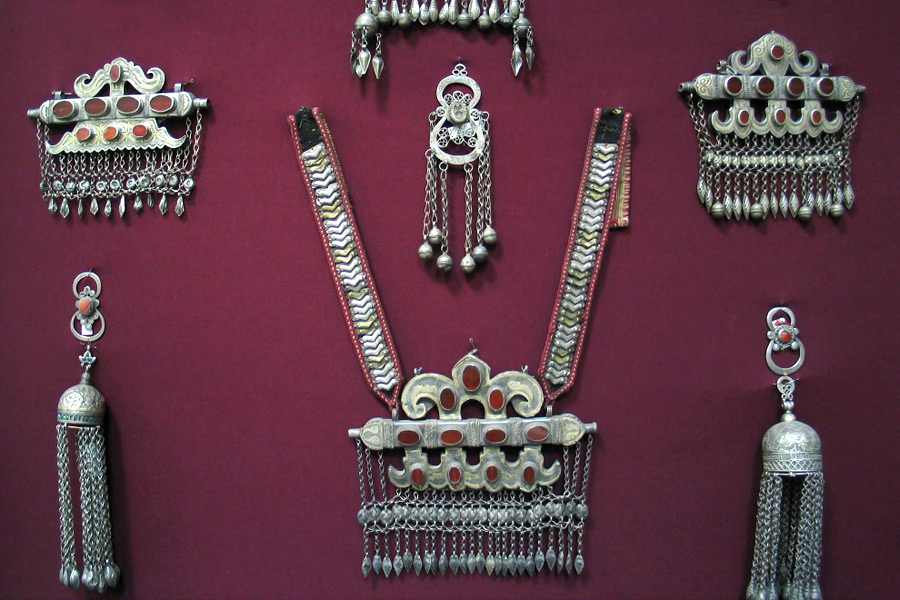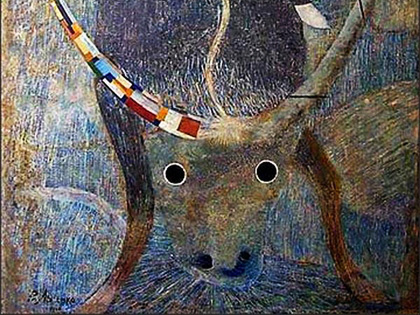Savitsky Art Museum, Nukus

The Karakalpakstan State Museum of Art Named after Igor Savitsky
Address: 116, Rashidov Street, Nukus
Phone: (+998 61) 222-25-73, 222-25-56, 222-88-83
Working hours:
Mon: day off
Tue-Fri: 9:00 – 17:00
Sat-Sun: 10:00 - 17:00
No lunch break
* Due to renovations at Savitsky Museum, some of the archaeological and applied arts exhibitions remain closed indefinitely.
Savitsky Art Museum in Nukus, capital of Uzbekistan’s semiautonomous Karakalpakstan Region, is one of the most extraordinary tourist destinations in the world.
Also known as Karakalpakstan State Museum of the Arts or simply Nukus Museum of Art, it has aptly been nicknamed “Louvre in the Sands”. In summer 2009, writers from The New York Time’s "Leisure" column and the International Herald Tribune advised art-savvy readers who are generally “difficult to surprise” to “visit the Nukus Museum before dying”, evoking the famous phrase of Ilya Ehrenburg “to see Paris and die!” In 2015, The Telegraph rated the city of Nukus #2 among “10 Extraordinary Destinations You Have Probably Never Heard Of”, citing Savitsky Art Museum as a key reason for this nomination.

The State Museum of Arts of Karakalpakstan was founded in 1966 at the initiative of Moscow artist Igor Vitalievich Savitsky (1915-1984). The museum holds the largest art collection in Central Asia, and its approximately 100,000 items provide chronological coverage of more than four millennia.
The museum’s formation is inextricably linked with the activities of the Khorezm Archaeological - Ethnographic Expedition, which in the 20th century excavated swathes of land in neighboring Turkmenistan and in Uzbekistan’s ancient Khorezm and Karakalpakstan regions. The head of the expedition, world-renowned scientist Sergei Tolstov, referred to the region’s majestic fortresses and monuments as "Central Asia’s Egypt." Savitsky was a member of this expedition. He began conducting independent studies, during which he collected applied folk art created by local artists. It was these fledgling collections, along with ancient and medieval artifacts, unique Zoroastrian graveyard samples with ancient Aramaic inscriptions, terracotta cult figurines and ceramic and bronze items bearing the influence of clashing civilizations, that were later to form the bedrock of his museum.
The museum is best known for its collections of 1920s-1930s avant-garde and post-avant-garde Moscovian art, although its assemblage of 1960s-1970s artwork created by non-conformists belonging to the Moscow underground is also noteworthy. These include thousands of works by masters who never received official recognition, but instead were accused of dissidence. Most became outcasts in the USSR, where socialist realism barred the path to recognition and even to basic survival for hundreds of talented individuals who lived in poverty and died in oblivion.

Savitsky Art Museum was the only official art institute during these tumultuous years which provided support and refuge for these cutting-edge creators. Remote Nukus, off-limits in those years to foreign researchers who only knew about this underground collection by hearsay, provided the perfect location to amass such compilations without garnering unwanted attention from the authorities.
The collection of the Department of Fine Arts deserves special attention for bringing worldwide renown to the museum. In this section, guests can view not only traditional works in the national art school, but also masterpieces of early 20th-century Uzbek artists, who lived during the birth and formation of the so-called "Turkestan avant-garde". This brilliant group of Russian orientalists, most fully represented in Nukus, includes Alexander Volkov, Ural Tansykbaev, Alexander Nikolaev (Usto Mumin), Mikhail Kurzin and others who received recognition posthumously as having left their undeniable mark on the history of world art.
Additional collections of Karakalpak folk art at Savitsky Museum reflect the gene pool of a small and historically semi-nomadic people now living in northwest Uzbekistan. The Karakalpaks absorbed traces of their ancestors, who once roamed the steppes of the Black Sea, Aral Sea, Volga and Caucasus regions. The helmet-shaped wedding headdress of Karakalpak women even recalls those of ancient Amazon warriors, whose armor bears strong resemblance to some of the women's costumes in the Nukus Museum of Art.

Numerous showcases of Karakalpak jewelry are presented in breathtaking splendor against a decorative backdrop of woven strips from a yurt, the traditional nomadic dwelling of the Karakalpaks. Inside the on-site yurt, visitors can glean little-known information about its assemblage and symbolism. Artefacts associated with Uzbeks, Turkmen and Kazakhs, the geographic neighbors and ethnic relatives of the Karakalpaks, are also on display.
The museum boasts of small collections of icons, antique furniture and decorative art, most of which is held in the storerooms. The on-site library is unique, holding the annals of numerous artists and outstanding scientists such as Tatyana Zhdanko and A.V. Gudkova. Additionally, a first-class collection of copies of world-famous masterpieces, made in the workshops of the Louvre in Paris and gifted to the museum by Nadia Leger, widow of French artist Fernand Leger, are exhibited in several rooms of the museum. The atmosphere of Parisian galleries can be sensed by all who visit this special graphics section.
What many visitors to the Nukus Museum of Art fail to realize is that the museum only showcases 3-5% of its entire collection in the two buildings housing its official displays. Those wishing to delve deeper into the museum’s treasure troves may do so through Advantour’s unique, behind-the scenes tour which includes a visit to the museum’s extensive storehouses and an exclusive interview with Marinika Babanazarova, who has been involved with the museum for over 25 years and has worked alongside Savitsky himself.
Regardless of the style of tour you choose, Savitsky Art Museum is a must-see for art enthusiasts and anyone traveling through Nukus in Karakalpakstan. The museum’s astonishing collections of the works of resilient and talented artists deserve to be showcased and appreciated by the world at large.

Tours to Nukus
Uzbekistan Museums
Museum of Art named after Savitsky - Useful links:
Festival of Traditional Culture - Asrlar Sadosi - 2012 and Savitsky Museum
Interview with Marinika Babanazarova - director of the Museum of Savitsky ( 2011, 10 February)


